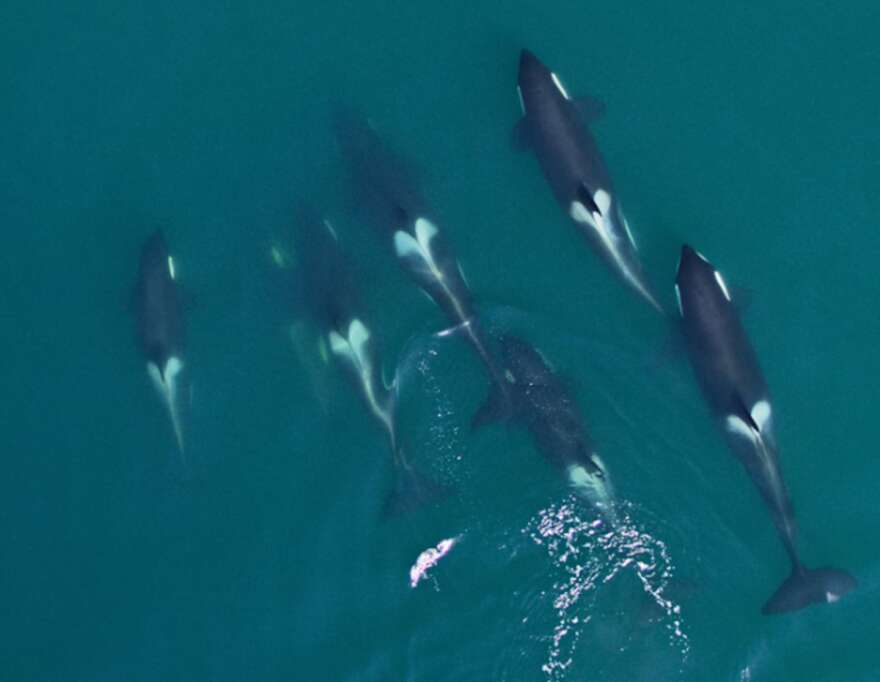It’s well documented by now that the marine heatwave that hit the Pacific Ocean in 2014 had devastating effects on Alaska’s marine ecosystem and commercial fisheries.
Now, scientists are uncovering long-term impacts on Alaskan killer whales specifically – a harbinger as marine heat waves become more frequent and severe with climate change.
“We’ve learned that females that were growing during those heat wave years grew to smaller sizes,” said John Durban, a senior scientist with the New England Aquarium in Boston who has been studying killer whales in the Gulf of Alaska for two decades.
“If you’re smaller as a whale, it means you don’t have as much fasting endurance, you can’t store as much blubber,” Durban added. “So if you go through lean times, you’re less likely to bring a successful pregnancy to term.”
Durban has been partnering with the Alaska-based nonprofit North Gulf Oceanic Society to monitor several hundred resident, salmon-eating killer whales in the Gulf of Alaska. He flies drones over the water, which capture images of the whales from more than 100 feet in the air.
Those images allow researchers to measure how individual whales are developing over time.
The North Gulf Oceanic Society has been monitoring killer whales in the Gulf for more than four decades. Durban said that work became particularly important in the aftermath of the Exxon Valdez oil spill, which correlated with an “unprecedented” number of whale deaths among two pods that were exposed to the spill, according to NOAA.
The resident killer whales gradually recovered over the years. Or at least they were recovering, before the 2014 heatwave known by many as “The Blob” hit the area, according to Durban’s research.
“We started seeing that this recovery that had happened over the previous three decades basically getting wiped out in the course of a couple of years,” Durban said.
The technology has delivered some good news. This summer, researchers observed three new calves, plus some slightly older ones that appeared to be healthy and growing as expected.
That could mean the population is on a path to recovery. But it doesn’t mean the Gulf’s resident killer whales are in the clear. The females impacted by the heat wave may be less resilient in the face of future events, such as heat waves or dips in the salmon population.
“We’re cautiously optimistic, but I think it does mean that there’s some vulnerable whales out there,” Durban said.
His latest scientific findings haven’t yet been published. But he said he’s working on several scientific papers that lay out evidence that the so-called blob is still impeding Alaskan killer whales’ growth and reproductive success today, a full decade later.
As he sees it, the findings underscore the importance of studying apex predators. They rely on species down the food chain, which means they can serve as early indicators of trouble in the broader ecosystem.
Durban emphasized that the findings also highlight something else: the threat of climate change.
“These marine heat waves that we’re starting to see in increasing duration and intensity around the world are having really important effects on marine food webs.”



